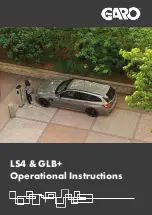
DRIVER SUPPORT
}}
283
Pedestrians
Optimal example of what the system considers to be a
pedestrian: clear body contours
To help function optimally, City Safety's function
for pedestrian detection needs clear information
about the person's head, arms, shoulders, legs,
the upper and lower parts of the body and a per-
son's normal pattern of movement.
In order to detect a pedestrian, there must be a
contrast to the background. If there is little con-
trast, the person may be detected late or not at
all, which may result in a late or no reaction from
the system.
City Safety can also detect pedestrians in dark-
ness with the help of the vehicle's headlights.
•
If major parts of the pedestrian's body are
not visible to the camera, he/she may not be
detected.
•
In order to detect a pedestrian, the system
must have a full view of the person's entire
body and the person must be at least 32 in.
(80 cm) tall.
WARNING
City Safety is designed to be a supplementary
driving aid.
It cannot detect pedestrians:
•
who are partially obscured, wearing cloth-
ing that prevents a clear view of the per-
son's body contours or who are not at
least 32 in. (80 cm) tall.
•
who have limited contrast to their immedi-
ate background. A warning or braking
may be delayed or not come at all.
•
carrying a large object.
The driver is always responsible for operating
the vehicle in a safe manner.
Related information
•
City Safety
™
(p. 279)
•
City Safety limitations (p. 285)
•
City Safety in crossing traffic (p. 283)
City Safety in crossing traffic
City Safety can help the driver when making a
left turn in an intersection.
Turning at an intersection
1. The area in which City Safety can detect an oncoming
vehicle
In order for City Safety to detect an approaching
vehicle in situations where there is a risk of a col-
lision, that vehicle must be within City Safety's
range (the red area in the illustration).
The following criteria must also be met:
•
your vehicle's speed must be at least 3 mph
(4 km/h)
•
the approaching vehicle's headlights must be
on
Summary of Contents for XC90 T8 TwinEngine Plug-In Hybrid
Page 1: ...WEB EDITION OWNER S MANUAL...
Page 2: ......
Page 13: ...INTRODUCTION...
Page 17: ...INTRODUCTION 15 Overview...
Page 19: ...INTRODUCTION 17 Preparations for charging the hybrid battery p 372 Starting the engine p 364...
Page 58: ......
Page 59: ...SAFETY...
Page 94: ...SAFETY 92 Related information Airbag system p 87 Seat belts p 62...
Page 95: ...INSTRUMENTS AND CONTROLS...
Page 175: ...CLIMATE...
Page 204: ......
Page 205: ...LOADING AND STORAGE...
Page 221: ...LOCKS AND ALARM...
Page 246: ......
Page 247: ...DRIVER SUPPORT...
Page 339: ...STARTING AND DRIVING...
Page 396: ......
Page 397: ...INFOTAINMENT...
Page 434: ......
Page 435: ...WHEELS AND TIRES...
Page 462: ......
Page 463: ...MAINTENANCE AND SERVICING...
Page 508: ......
Page 509: ...SPECIFICATIONS...
Page 511: ...SPECIFICATIONS 509 Location of labels...
Page 533: ......
















































